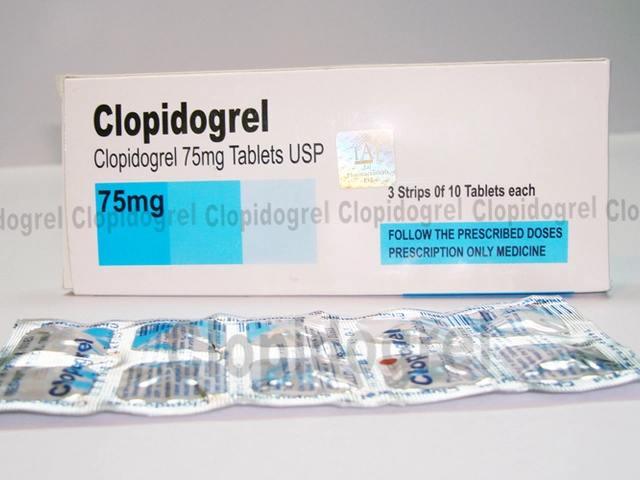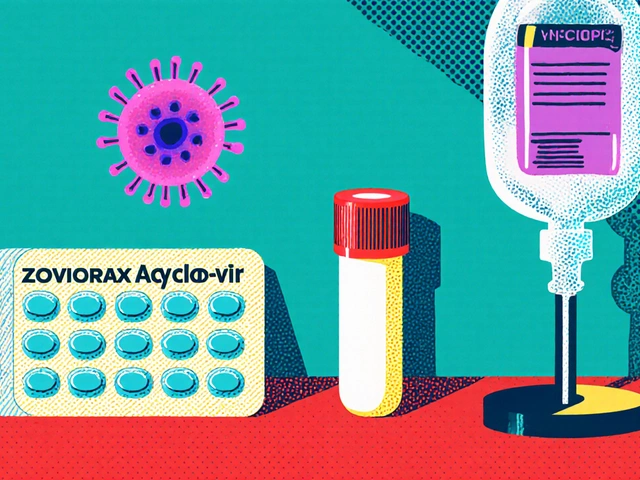Pain that spreads across half your head, pulsing and sharp, with a bonus round of nausea and lights that just won’t quit—no, it’s not a hangover. That’s a migraine, and for over 39 million Americans (according to the Migraine Research Foundation), it’s a regular guest that never waits for an invitation. Now imagine there’s a button you could press to turn down the pain. That’s what Imitrex promises. This little pill or shot, known by its fancy name sumatriptan, has changed the migraine game. Some people call it a miracle. Others say it’s the only thing that makes life bearable. But what really goes on when you reach for Imitrex? And what’s the catch?
How Imitrex Works in the Body (Without the Science Overload)
To really get what makes Imitrex tick, you’ve got to look at what happens during a migraine. Inside your brain, blood vessels swell up and nerves freak out, sending a tidal wave of pain signals. Imitrex, which is actually the brand name for sumatriptan, taps into the brain’s own chemistry. It’s a triptan—a class of drugs that zero in on serotonin receptors. When you take Imitrex, it attaches to those receptors, making the swelling blood vessels shrink back down and calming the rebel nerves.
Here’s the wild part: Imitrex is only for migraines or cluster headaches. If you’ve got a basic tension headache or sinus pressure, it’s not going to help. One dose usually brings relief within 30-60 minutes. Some people swear the nasal spray kicks in even faster. Shots (subcutaneous injection sounds nicer than ‘jab’ but you get the picture) can bring results in as little as 10-15 minutes for those in absolute agony.
Imitrex doesn’t prevent migraines—it just handles the misery if they hit. Doctors say to use it as soon as you notice your warning signs: that shimmer in your vision, the tingly face, or just the sense that one’s brewing. The earlier it’s in your system, the better shot you’ve got at escaping hours (sometimes days) of torture. There’s a catch, though: you shouldn’t use it more than 10 times a month. Explore that slippery slope, and you can actually end up with rebound headaches from the medication itself.
Here’s a quick glance at how fast it works, by form:
| Form of Imitrex | Onset of Relief |
|---|---|
| Tablet | 30-60 minutes |
| Nasal Spray | 15-30 minutes |
| Injection | 10-15 minutes |
There’s no one-size-fits-all. Some swear by the pills, others carry injectors for the really brutal attacks. Talk to your doctor before you pick a favorite—especially if you have other health issues.
Who Should (and Shouldn’t) Use Imitrex
It’s tempting to call Imitrex a miracle worker, but it’s not the answer for everyone. Adults and teens (typically over 12 for the nasal spray or injections) can get a prescription, but not every migraineur is a candidate. If you’ve got a history of heart disease, uncontrolled high blood pressure, certain types of strokes, or specific blood vessel problems, this medication is a no-go. Why? Because Imitrex squeezes down blood vessels—not just in your head, but everywhere, so it could mess with circulation in people already at risk.
If you’re pregnant or breastfeeding, it gets tricky. There just aren’t enough studies yet to call it totally safe, so doctors often recommend avoiding it unless the potential benefit really outweighs the risks. For people using antidepressants, particularly SSRIs or SNRIs, there’s a rare but real risk of serotonin syndrome—a condition where your body gets dangerously overloaded with serotonin. Always double-check drug lists and talk with your healthcare provider.
Some people react to Imitrex in ways you don’t expect. My friend Julie found it worked wonders, but then out of nowhere, she felt her chest tighten up—scary but (luckily) short-lived. Steven, my spouse, has never needed migraine meds, but if he ever has a brutal headache, I’d insist he get checked before borrowing anyone’s prescription pad. That’s another thing: never self-medicate with Imitrex from a friend. It’s not just risky, it’s illegal.

What to Expect: Side Effects, Precautions, and What No One Tells You
If you’re new to Imitrex, brace yourself—it’s not always a walk in the park. Sure, lots of people get fast relief, but there can be side effects. These usually show up soon after taking a dose and fade within a few hours. The most talked-about? A tingling or prickly feeling, tightness in the jaw, neck or chest, and sometimes fatigue or dizziness. Some people feel flushed or break out in mild sweats. Less commonly, you could get a weird, heavy feeling in your arms or legs. It’s harmless in most cases, but it’s enough to catch you off guard.
Then there are the rare but more serious issues. Signs like shortness of breath, severe chest pain, irregular heartbeat, or sudden vision changes mean it’s time to get help—now. Your doctor will talk about these before you get your first script, but honestly, most people only listen after they have a close call.
One thing you don’t hear enough: Imitrex can give you what’s called ‘medication overuse headache.’ If you find yourself reaching for it too often, migraines can start coming more frequently and feel different (and worse). That’s why most doctors cut you off at 10 doses a month. Beyond that, it’s probably time to rethink your overall migraine management plan. Bring in your doctor (and maybe a headache specialist) to review everything from your triggers to your daily routine.
And here’s a cool tip: hydrate before and after you take Imitrex. It won’t cure the migraine, but it often helps minimize side effects. Plus, sleep matters. Take your dose, and if possible, find a quiet, dark space to rest—your recovery window is often shorter that way.
Getting Imitrex: Insurance, Generics, and Real-World Tips
Nothing shatters your relief like sticker shock at the pharmacy. The patent for Imitrex expired years ago, so you can get sumatriptan (the generic) for way less money. Some insurance plans still try to push their preferred brands first, so you might need a prior authorization. When in doubt, ask for the generic—it’s just as effective as the brand-name stuff and saves serious cash. According to a GoodRx study, the average cash price for a single brand-name Imitrex pill can soar above $60, while sumatriptan generics are often under $5 each.
A quick heads up: not all pharmacies stock every form, especially the injector pens or nasal sprays. If you need one fast, call ahead so you’re not stranded when a migraine hits. Some people even keep emergency doses at work, in their car, or in a small kit. A buddy of mine keeps a tablet wedged in his wallet for ‘just in case’ moments, which always gives me a laugh—but it’s saved him more than once.
Never wait out the pain ‘to be tough.’ The sooner you take your dose when you sense a migraine coming, the more likely you are to actually squash it. Also, keep a headache diary if you haven’t already—track when you use Imitrex, your triggers, food, sleep, stress, changes in weather. You’ll spot patterns you never saw, and it helps your doctor know if it’s time to change up your treatment. There are awesome apps now for tracking all of this with minimal fuss.
- Tip: Ask your pharmacy about manufacturer coupons or patient assistance programs if you’re paying out of pocket. Every little bit helps.
- Never split or crush Imitrex tablets. They’re made for quick action, and messing with the pill can ruin the way it absorbs.
- If you tend to get migraines at specific times (like after exercise or before your period), keep a dose nearby so you can catch it early. Timing really is everything.

Other Migraine Solutions and When to Seek Help
Imitrex plays well with some other anti-migraine tricks, but it doesn’t replace a full plan. Some people use preventive meds (like propranolol, topiramate, or Botox injections), while others swear by non-drug approaches like acupuncture, magnesium, or diet changes. Not everyone responds the same, but it’s worth discussing options with your doc—especially if you’re stuck in a rut where Imitrex is less effective over time.
For anyone struggling with more than four migraines a month, it’s often a good idea to ask about preventives. Starting a new med can sound scary, but the long-term benefits (fewer attacks, better quality of life) usually win out. If you ever have the “worst headache of your life,” neck stiffness with fever, loss of vision, or confusion, seek medical help right away—those are red flag symptoms for things more serious than a typical migraine.
Another thing worth trying: non-drug stuff that dials down your stress. Biofeedback, meditation, or regular exercise might sound like clichés, but they make a difference for lots of people. Some new gadgets, like external nerve stimulators, are popping up too. If you’re ever overwhelmed by the options, just remember—talk to someone who gets it, even if it’s a friend, loved one, or fellow sufferer online. Dealing with migraines is a journey, and having backup makes a world of difference.
Have you ever felt like your medication just isn’t working as well anymore? You’re not alone. Heads up: sometimes, your body gets used to triptans over many years. If that happens, let your doctor know—there are new meds on the market, including gepants or ditans, designed for people who can’t use or don’t respond to triptans like Imitrex.






Maeve Marley
May 31, 2025 AT 11:23Been on Imitrex for 7 years now-still works like a charm, but I’ve learned the hard way that timing is everything. If I wait until the nausea hits, it’s already too late. I take it the second I see that flicker in my peripheral vision. Also, hydration is non-negotiable. I keep a 32oz bottle next to my bed and chug half before I even swallow the pill. It cuts the chest tightness way down. And yeah, I hit the 10-dose limit every month like clockwork-my neurologist knows me by name now. No regrets, just discipline.
Jasmine Hwang
June 1, 2025 AT 22:58im not even kidding i took one once cause i had a headache and thought ‘maybe itll help’ and then i felt like my whole body was being squeezed by a giant octopus. never again. also why is this even a thing? like who decided it was a good idea to make people inject themselves with chemicals just to stop a headache???
BERNARD MOHR
June 2, 2025 AT 05:56So let me get this straight-you’re telling me the government lets Big Pharma sell this stuff because it ‘shrinks blood vessels’? 🤔 But if you think about it, that’s exactly what they do to your arteries in the first place with processed foods and sugar. Imitrex isn’t a cure-it’s a Band-Aid on a bullet wound. And the fact that they don’t warn you that it can mess with your heart long-term? Classic. I’ve got a friend who got a stent after using this for 5 years. Coincidence? Nah. They don’t want you to know the real cost. Also, why is the nasal spray so expensive? Someone’s making bank off migraine sufferers. #BigPharmaLies
Jake TSIS
June 3, 2025 AT 00:23Imitrex? That’s just a fancy way to say ‘chemical leash.’ I’ve seen people on this stuff like it’s candy. Meanwhile, real Americans get relief from ice packs, acupuncture, and cutting out gluten. This is why we’re weak. We don’t suffer anymore-we medicate. And don’t even get me started on the injection pens. What’s next? A vape pen for migraines? We’re becoming a nation of cowards.
Akintokun David Akinyemi
June 4, 2025 AT 03:30As a neurologist-in-training in Lagos, I’ve seen this play out across continents. Sumatriptan is a game-changer in low-resource settings because it’s fast, cheap, and doesn’t require IV access. But the real issue isn’t the drug-it’s the lack of migraine education. Most patients here wait until they’re incapacitated before seeking help. And yes, medication-overuse headaches are rampant, especially when people self-medicate with leftover pills from relatives. The key isn’t just prescribing-it’s coaching. Teach patients to track triggers, hydrate, sleep, and avoid tyramine-rich foods. Also, the generic is 98% as effective. No need to pay $60 for a pill when $4 does the job. Let’s stop romanticizing the brand and start optimizing access.
Corine Wood
June 5, 2025 AT 08:47I used to think Imitrex was magic until I realized I was using it as a crutch to ignore my lifestyle. I was working 70-hour weeks, sleeping 4 hours a night, and chugging energy drinks. The drug worked, sure-but it didn’t fix the root. Once I started prioritizing sleep hygiene, reducing screen time before bed, and adding magnesium glycinate, my attacks dropped by 70%. I still keep Imitrex in my drawer for the really bad ones, but now I use it like a fire extinguisher-not a daily shower. Don’t get me wrong, it saved my career. But healing isn’t just pharmacological. It’s emotional, environmental, and intentional.
James Gonzales-Meisler
June 6, 2025 AT 09:30Correction: The article states that Imitrex is ‘only for migraines or cluster headaches.’ This is inaccurate. Sumatriptan is also approved for paroxysmal hemicrania and other trigeminal autonomic cephalalgias. Additionally, the claim that ‘no studies exist’ on its safety in pregnancy is misleading-there are over 1,500 prospective registry cases with no increased risk of major malformations. The FDA classifies it as Category C, not ‘avoid at all costs.’ And while the price comparison between brand and generic is correct, the average cash price for sumatriptan 100mg tablets is $3.27 at Walmart, not ‘under $5’-it’s often lower. Precision matters.